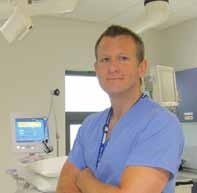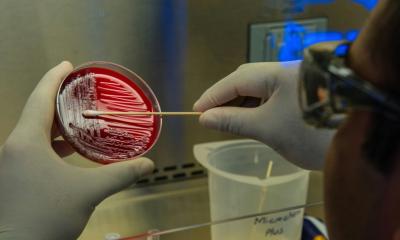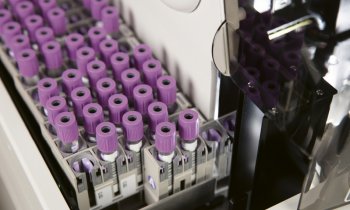Sepsis
Along with a call for earlier identification and intervention in sepsis cases, intensive care consultant Dr Ron Daniels also stressed that timely intervention is cost-effective for health systems as it leads to fewer sepsis patients needing treatment in intensive care units (ICU).

With 100,000 sepsis cases a year in the UK leading to 37,000 deaths – more than breast, bowel and prostate cancers combined – Dr Daniels said a key factor to an effective medical response to sepsis was increased awareness of the condition and symptoms among health professionals and the public enabling basic, but highly-effective, treatment to begin promptly.
Dr Daniels, from the Good Hope Hospital in Birmingham, is also Chief Executive of the Global Sepsis Alliance, a coalition of healthcare professionals and healthcare bodies operating worldwide to raise awareness of sepsis and drive resources into research and rapid response at a time when cases are increasing by 8-13% annually. ‘Sepsis is a serious problem,’ he said. ‘We are looking at an incidence of 240-300 cases per 100,000 population, with a mortality rate in the order of 30%. Each case of sepsis costs a health economy around €25,000. For the UK alone we are looking at £2.5 billion to be spent every year to treat sepsis.’
Sepsis is the immune-mediated response of the body to an infection that causes injury to its tissues and organs and while anyone can get sepsis, those who have chronic illness, or are very young or very old, or have conditions such as pneumonia, a perforated bowel or urinary tract infections, tend to be more vulnerable. Uncomplicated sepsis caused by minor infections is common and does not always require hospital treatment but can deteriorate to severe Sepsis, which occurs when the body’s response to infection has started to interfere with the function of vital organs.
Dr Daniels stressed that sepsis is primarily caused by community-acquired organisms, rather than healthcare associated infections (HAIs) and can give rise to influenza-like symptoms, slurred speech, a racing heartbeat, unusual skin colour and laboured breathing. When identified quickly, Dr Daniels said treatment is under the Sepsis 6 care plan - a six-stage treatment response that focuses on sampling of blood cultures (and cultures of other body fluid) to find microbes that are causing the problem; antibiotics delivery; supplemental oxygen therapy; administering rapid intravenous fluids to restore circulation; measurement of lactic acid, and urine output monitoring. However, patients identified at a later stage often suffer septic shock, which usually requires treatment in a critical care setting using an Early Goal-Directed Therapy care package to improve circulation with central venous catheters and vasoactive drugs.
‘The Sepsis 6 and Early Goal- Directed Therapy together complete the gold standard of care known as the Resuscitation Bundle, but as other organ failures ensue, a patient may also need supporting with a ventilator or kidney machine,’ Dr Daniels explained. ‘By the time they reach the stage of septic shock they are very ill and have a 50/50 chance of making it: Early Goal-Directed Therapy gives about a 16% reduction in the risk of death. ‘The basics are more effective, but we need to get to patients early in order to deliver them. Our modelling suggests that if we can get 80% of patients treated in a timely fashion, for every 500 acute beds in a particular geographical area we will save 80 lives and £750,000 or €0.9 million a year.’ While recognition of sepsis is more embedded in critical care and emergency medicine, he added that a key part of that rapid response process is in raising awareness among primary care physicians, community nurses and paramedics.
As well as trying to raise awareness, the Global Sepsis Alliance – which includes the World Federation of Societies of Intensive and Critical Care Medicine and the World Federation of Critical Care Nurses – is also seeking governmentapproved evaluations of the economic and health burdens of sepsis in member countries. It has also organised the first World Sepsis Day (13 September). Sepsis research is also underway on two main fronts – to improve and simplify early sepsis detection and to study immune-modulatory therapy to focus on the various molecules involved in the immune response that causes sepsis and seeing whether drugs can be developed to tackle this.
Other organisations involved in the fight against sepsis include the UK Sepsis Trust, which is allied to the Global Sepsis Alliance; the UK Sepsis Group, a voluntary group of healthcare professionals helping to embed sepsis care within working practices; and the Surviving Sepsis Campaign, an international coalition of professional bodies whose function is to create professional guidelines.
10.07.2012








